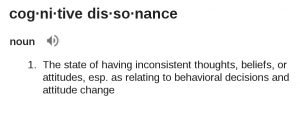 As a technology-focused founder, what could be better than building a cool new machine? Innovating for its own sake is fun, challenging and it lets you learn powerful new tools. A clever new technology is seductive – you want to tinker with it, improve it, add features, tweak the design. But great technology most certainly does not imply a great business model. That’s the Technologist’s Curse – a technical founder falling in love with his or her new machine and losing sight of the underlying business case for the product.
As a technology-focused founder, what could be better than building a cool new machine? Innovating for its own sake is fun, challenging and it lets you learn powerful new tools. A clever new technology is seductive – you want to tinker with it, improve it, add features, tweak the design. But great technology most certainly does not imply a great business model. That’s the Technologist’s Curse – a technical founder falling in love with his or her new machine and losing sight of the underlying business case for the product.
I’ve certainly been guilty of that myself. Take the legal services profession – it’s an area that by any measure is crying out for technological innovation. Law firms frequently still use Windows XP and Office 2003. Often it’s easier to find things on Google than your own expensive knowledge management system. And as a lawyer, you spend so much of your day fighting with the technology you already have. Getting the formatting right on a big agreement is one task that every corporate lawyer has struggled with. It’s so deeply frustrating to attorneys – all you want is to get something out to your client and it usually feels like the tech is the thing that’s slowing you down.
For me, once of the biggest frustrations was looking at the same type of agreement again and again, yet not having any easy-to-use procedure for ensuring it had all the language I wanted. There just must be some way to avoid reinventing the wheel again and again (not to mention relying solely on my own experience and judgment rather than using a sort of checklist to back these up). My solution was simple – I’ll just build a machine to check over the contract to ensure it contained everything it should contain! Easy!
Legal language is rarely drafted from scratch – you almost always work from a model. An attorney’s nightmare is having a judge say, “You drafted this term differently from what every other lawyer from time immemorial has drafted. Therefore, you must have intended a different result.” Legal text is deeply conservative and thus it lends itself to lexical analysis more than free text language. That’s when the seduction began…
Text analytics is tantalizing since you can get pretty good results without that much effort. But that’s when things start getting much, much harder. There are a plethora of algorithms, techniques and black magic in text analytics, from natural language processing to grammatical parsing to the Porter stemming algorithm to all sorts of machine learning tools. Fidgeting with the various levers typically improves one type of result while degrading another.
Thus it’s easy to fall into the “just one more adjustment” mindset that eats valuable time without necessarily providing any business-level benefits. I spent months trying to get this right – I’d tweak one setting, get a small improvement, but it would break something else.  Being a prudent, Steve Blank-reading entrepreneur, I tried during this time to get customer validation that the vision was actually something valuable. As it turned out, the technology that got more enthusiasm was actually simpler – instead of actually getting into the interpretation of specific provisions, it was enough for now just to classify them for user analysis. That alone saved lawyers tons of time and helped prevent mistakes. But learning this was a painful lesson that only sank in after making these mistakes myself. That’s like so much of entrepreneurship – you’re aware of this advice on an intellectual level, but unless you’ve done it before, you just don’t know what it feels like to get it right.
Being a prudent, Steve Blank-reading entrepreneur, I tried during this time to get customer validation that the vision was actually something valuable. As it turned out, the technology that got more enthusiasm was actually simpler – instead of actually getting into the interpretation of specific provisions, it was enough for now just to classify them for user analysis. That alone saved lawyers tons of time and helped prevent mistakes. But learning this was a painful lesson that only sank in after making these mistakes myself. That’s like so much of entrepreneurship – you’re aware of this advice on an intellectual level, but unless you’ve done it before, you just don’t know what it feels like to get it right.
A corollary to the Technologist’s Curse, and one I’m really focused on now, is just-one-more-feature-ism: if I build just one more feature, people will start buying in droves. This is rarely the case, but to people who regularly use, build and even enjoy technology, the power that comes with additional features is seductive…and the coding behind them is just so clever!
There’s something to be said for at least one founder without a deep, behind-the-scenes understanding of the underlying technology – it’s easier to have some distance from your product and see it more objectively. If sales aren’t going as quickly as you want (isn’t that always?), a technologist naturally focuses on what he knows best – the underlying technology – despite evidence to suggest that this might not be the problem at all. That’s where an objective set of eyes is really critical.
Photo Credit: Tantalus – Giulio Samuto, 1565, illustrations to Ovid’s Metamorphoses, in Modern Languages / Anthropology 3043: Folklore & Mythology. Laura Gibbs, Ph.D.

Comments are closed.